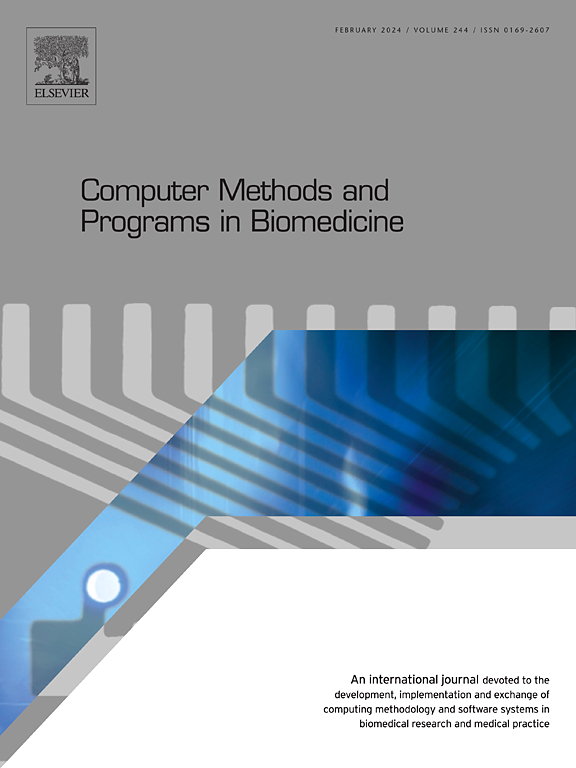Finite element analysis predicts a major mechanical role of epicardial adipose tissue in atherosclerotic coronary disease and angioplasty
IF 4.9
2区 医学
Q1 COMPUTER SCIENCE, INTERDISCIPLINARY APPLICATIONS
引用次数: 0
Abstract
Background
Understanding how atherosclerosis and angioplasty biomechanically affect the coronary artery wall is crucial for comprehending the pathophysiology of this disease and advancing potential treatments. However, acquiring this information experimentally or in vivo presents challenges. To overcome this, different computational methods have been employed. This research assessed the impact of atherosclerosis and angioplasty on the strains of each coronary artery tunic using the finite element method.
Methods
Anatomical data were used to create two three-dimensional models of the left anterior descending coronary artery: one representing a normal artery and the other with concentric atherosclerosis, which included the surrounding epicardial fat tissue (EFT) and the three arterial tunics (e.g., intima, media, and adventitia). Blood pressure was applied to both models, and angioplasty was performed in the atherosclerotic model. The mean maximum principal and minimum principal strains were obtained for each layer in each case, and the impact of EFT was analyzed by comparing the results of including and omitting it. Furthermore, a sensitivity analysis was conducted for EFT stiffness, EFT volume, and blood pressure.
Results
Noteworthy biomechanical alterations were observed in the atherosclerotic model before and after angioplasty, compared to the healthy state. After angioplasty, strains in the media and adventitia layers increased on average by up to fivefold, whereas the intima layer experienced a comparatively lower impact. Similarly, excluding EFT resulted in an average fourfold increase in strains in the tunics of both the healthy and atherosclerotic models. In addition, in both healthy and atherosclerotic models, a rise in blood pressure caused the most significant increase in arterial tunic strains, followed by reduced EFT stiffness and increased EFT volume, in order of impact.
Conclusion
Coronary artery wall strains are significantly altered by atherosclerosis and angioplasty, leading to cellular growth in the media and adventitia layers and subsequent reobstruction of the lumen after the procedure. EFT strongly influences coronary wall biomechanics, with low EFT stiffness and high volume predicted as risk factors for the development and severity of atherosclerosis. However, all the above may be modulated through interventions targeting epicardial adipose tissue.
求助全文
约1分钟内获得全文
求助全文
来源期刊

Computer methods and programs in biomedicine
工程技术-工程:生物医学
CiteScore
12.30
自引率
6.60%
发文量
601
审稿时长
135 days
期刊介绍:
To encourage the development of formal computing methods, and their application in biomedical research and medical practice, by illustration of fundamental principles in biomedical informatics research; to stimulate basic research into application software design; to report the state of research of biomedical information processing projects; to report new computer methodologies applied in biomedical areas; the eventual distribution of demonstrable software to avoid duplication of effort; to provide a forum for discussion and improvement of existing software; to optimize contact between national organizations and regional user groups by promoting an international exchange of information on formal methods, standards and software in biomedicine.
Computer Methods and Programs in Biomedicine covers computing methodology and software systems derived from computing science for implementation in all aspects of biomedical research and medical practice. It is designed to serve: biochemists; biologists; geneticists; immunologists; neuroscientists; pharmacologists; toxicologists; clinicians; epidemiologists; psychiatrists; psychologists; cardiologists; chemists; (radio)physicists; computer scientists; programmers and systems analysts; biomedical, clinical, electrical and other engineers; teachers of medical informatics and users of educational software.
 求助内容:
求助内容: 应助结果提醒方式:
应助结果提醒方式:


